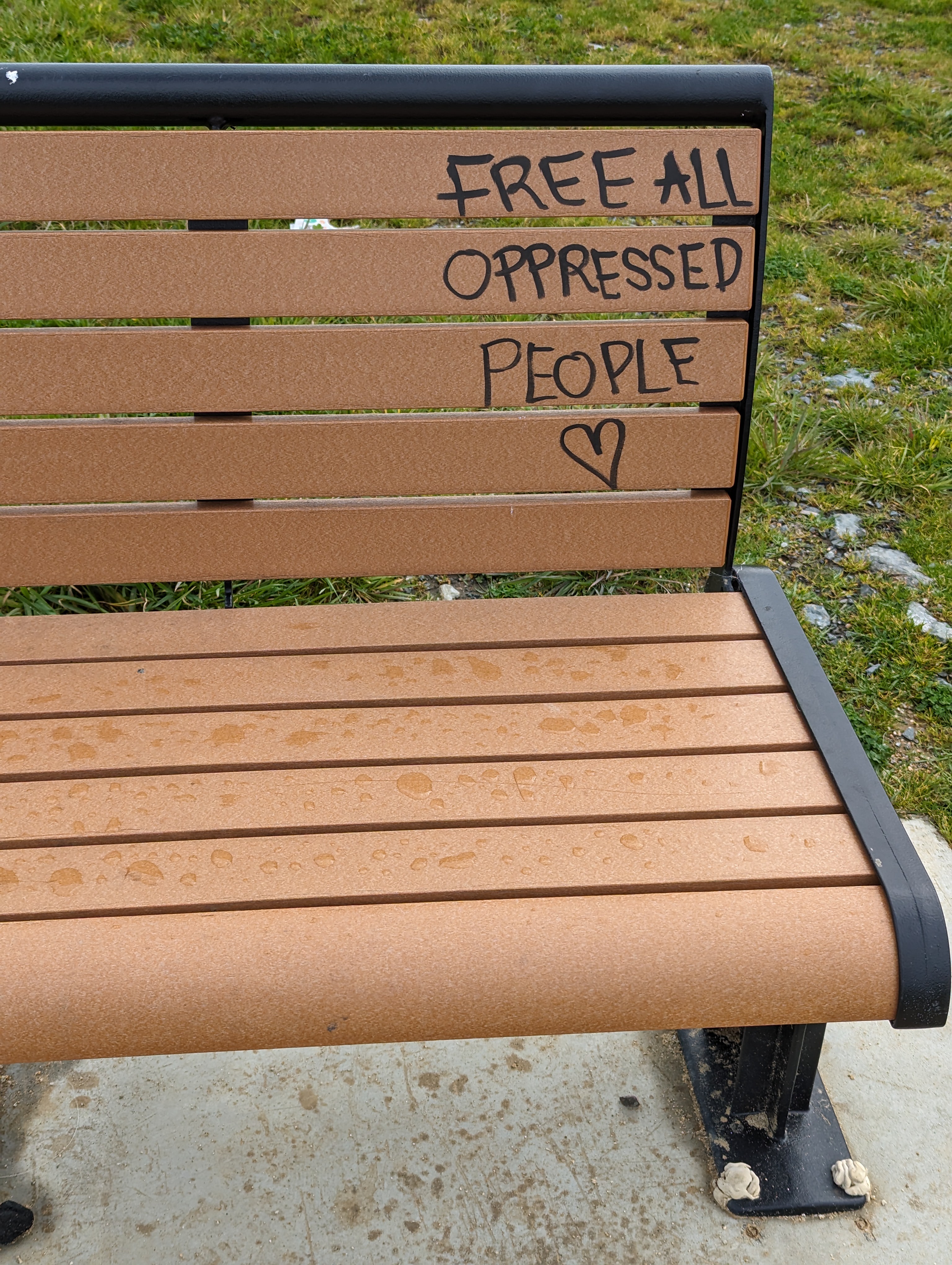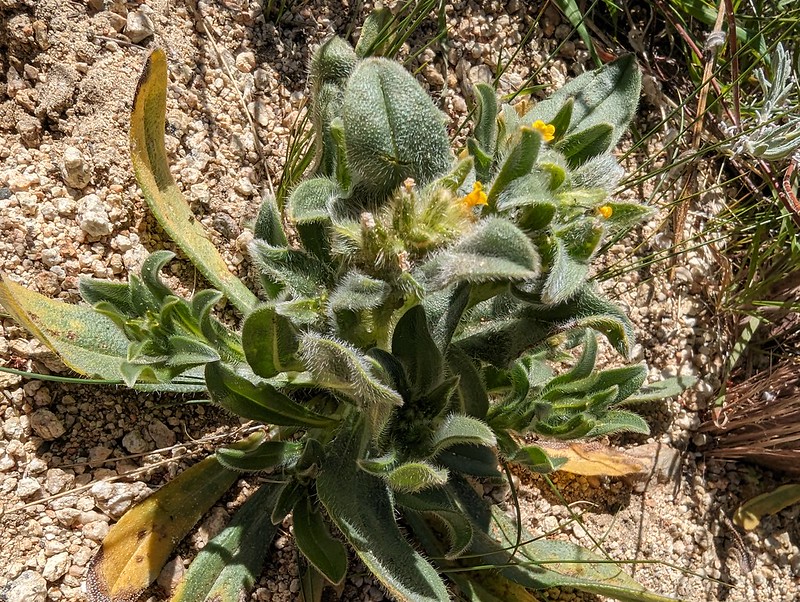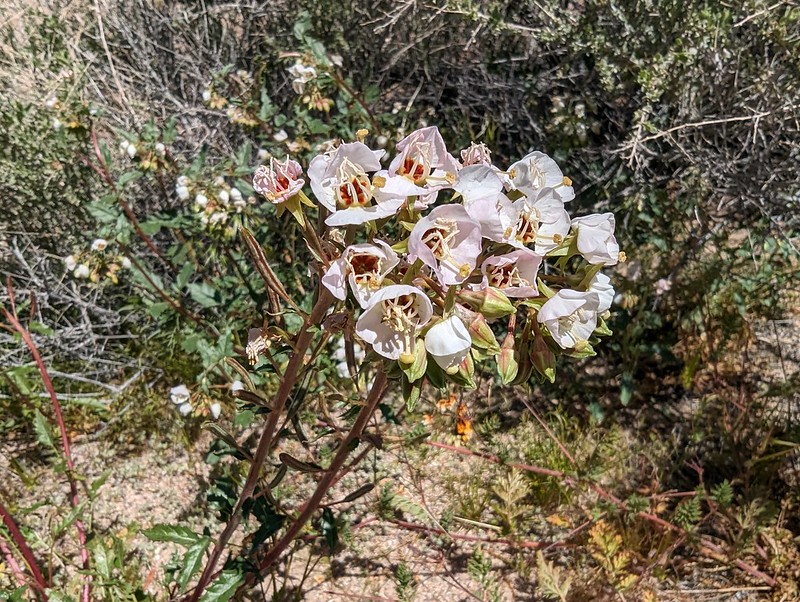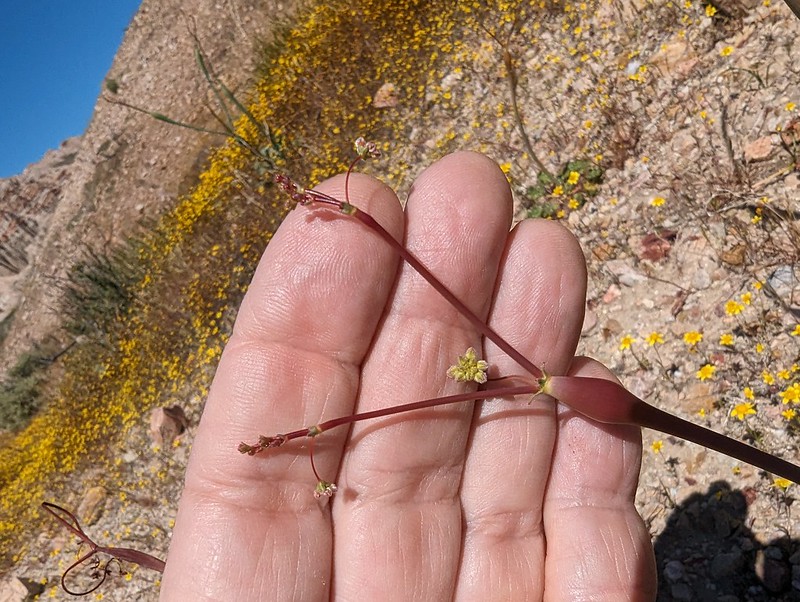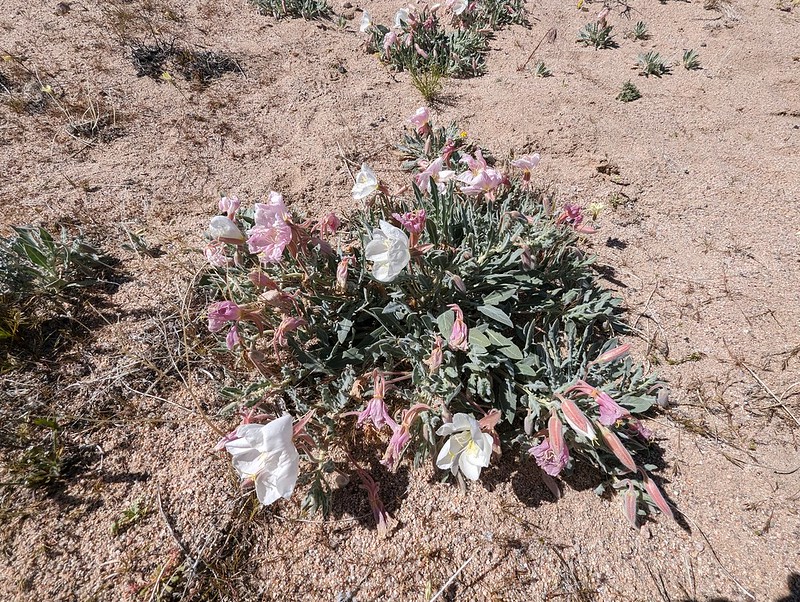It was a tumultuous time.
In the movie Castaway, Tom Hanks plays Chuck Noland, a Fed Ex official from Atlanta whose plane goes down and he ends up stranded alone on an island. While Tom Hanks is a good actor, he does betray himself on one occasion during the film. At one point there is a storm, and a porta-potty washes up onto the island. The location of the company the porta-potty belongs to is written on it. As Hanks character reads the word Bakersfield, he says it with a touch of disdain, which only a Californian would know to do.
But I knew. Me—who never thought I would live in California. But we ended up in Bakersfield, where we went through one of the most difficult periods of our lives, which had nothing to do with that city—It just happened to be where we were at the time.
But the story begins a few years before that, in Haiti.
After we had been married a few years, we decided we would like to have some children. But Ingrid was not getting pregnant. We decided to seek medical help to try to figure out why. We started out by going to some doctors in Haiti, where we were living at the time. But we were not successful there.
Some Haitian people we knew suggested a different approach. They said we should each sleep with someone else. That way, either Ingrid would get pregnant with another man or I would father a child with another woman. That technique did not seem too appropriate to us.
Instead, we ended up consulting with a physician in Connecticut who had successfully helped my brother and sister-in-law with infertility issues. We made a few trips there and Ingrid ended up having two surgeries to try to correct some problems but, in the end, it was not successful. That was in 1988.
We thought about adopting. Being that we were in Haiti at the time, we figured if we did adopt, it would be a black, Haitian child. We contacted the pastor of the last church we had attended in Alabama, asking it this would be a problem if we were to do so (as many in that town did not approve of mixed race families) and eventually end up back in the church. He said it would be okay.
But neither Ingrid nor I would feel like adopting at the same time. I might feel like pursuing adoption at one point, but Ingrid would not. Or she would feel like adopting at one point, and I would not. Eventually we decided that children were just not going to be a part of our family, and we eventually grew comfortable with the idea.
Now for a bit how our theological journey fits into this. Before coming to Thailand we each had varied church experience. Ingrid's background was Lutheran, Christian and Missionary Alliance, and a brief foray into Pentecostal. Mine was Conservative Baptist and Presbyterian. We had most recently been a part of a Southern Baptist church. These churches tended to follow either a Dispensationalist or Reformed/Calvinistic theology. But in my own Bible reading I became disillusioned with both of these. My Bible School was of the dispensationalist stream but I had also read theology texts of the Reform writers.
Both Dispensationalism and Calvinism/Reformed theologies are systematic theology systems. The problem I have with systematic theologies is that the systems end up becoming the end rather than the means to the end. They are meant to help us understand what God is like, but end up being used to define what God is like. If a particular scripture didn't seem to fit the system, it was taken out of context and/or its meaning twisted so that it would. I wrote more about that here. But I didn't know what to do with these thoughts. Was I alone in thinking like this? Was I a heretic in my brain?
In 1989, a woman had been part of our team the first time we had gone to Haiti in 1981 sent us a couple of books: Power Evangelism by John Wimber and Power Christianity by Charles Kraft. (Though I didn't get around to reading the latter until a couple of years later.) John Wimber espoused Kingdom Theology (beliefs that are also held in the Anabaptist churches we are now a part of) and he used a phrase that kind of pieced everything together for me: The kingdom of the already and not yet. Suddenly it all made sense to me—Wimber had summarized in a few words how I was coming to understand the Bible. John Wimber helped launch the Vineyard Movement in Anaheim, California which had grown into the Vineyard Christian Fellowship of Churches. (Several years later joined about a dozen other people to learn more about this Theology in a Vineyard Bible Institute class taught by John Wimber.)
By 1993, we knew something needed to change—either we had to move someplace else in Haiti or we had to leave Haiti. I arranged to take an Apprenticeship in Ecological Horticulture at UC Santa Cruz. It was a six-month program and it would give us time to process what we should do next. We arranged all our belongings, separating what we would not keep if we were to leave. During the time we were in California, we would make up our minds. In September, about a month before the apprenticeship program was over, it was clear to us that we should not continue to work in Haiti. After the program was over in October, we went back to Haiti to finish up things with the Baptist Haiti Mission and then moved on to California.
While I was taking the apprenticeship, Ingrid got a job in home health nursing out of Atherton. She was staying with my sister and family in that area while I camped out on the farm at UC Santa Cruz along with the other apprentices. In the meantime, we joined a Vineyard Christian Fellowship Church in Palo Alto because we wanted to explore more about what we read in the books while in Haiti. It was a time of healing and refreshing for us. After the apprenticeship was over, I got a job landscaping in the Bay Area.
In January, 1994, I contacted the Soil Conservation Service (now the Natural Resources Conservation Service) in California about job opportunities to do work similar to what I did in Alabama in the early 1980's. I found out there were possible job openings in Bakersfield and possibly the Mojave Desert area. So I applied for a job with them.
The following month, there was a conference on Healing at the Vineyard Church in Anaheim. The keynote speakers were John Wimber and Francis Macnutt. We would take the opportunity to visit Bakersfield and also visit a cousin who lived in the area whom I had not seen in 18 years. (More about that here.)
 |
| On our drive through Kern County for the first time we saw Nicolls Peak We decided then that we would climb it one day, though it was several years before we found the way up. |
We had an amazing time at the conference, and it is really hard to describe what was going on inside us spiritually. At one point, there was a prayer time for those struggling with infertility, and Ingrid decided to receive prayer for that. We were convinced that God was at work. I even had a name for our daughter to be.
A couple of weeks later we found out that if Ingrid was going to get pregnant, it wasn't yet.
That same week we got a phone call from a couple we used to work with in Haiti. They had left before us and settled in Alabama. They were calling to tell us that their teenage daughter was pregnant and their daughter was wondering if we would be willing to adopt the daughter when she was born in two months.
If they had called just a few weeks earlier, we would have said no without hesitation. But now we were thinking about children again. We said we would pray about it and get back to them soon.
Soon. We did not have a lot of time if we were going to process everything. We prayed and got others to pray. We consulted with others. In the end we felt led to go ahead with it.
About this same time, I got offered the job in Bakersfield, starting the beginning of April. The baby was due at the end of that month. When I told my coworker we were moving to Bakersfield he said to me incredulously, "Bakersfield!? You're moving to Bakersfield!?" I did not know it had the reputation as the armpit of California. When I saw the scene in Castaway several years later, it reminded me of this conversation.
Since this was to be an out of state adoption, we secured a lawyer in Alabama to help us. Bethany Christian Services was handling things on the California side. We had to do a home study that we began in Mountain View but finished in Bakersfield. We even had to take an infant first aid course.
We found an apartment in Bakersfield kitty-corner from my office. We connected with the Vineyard Christian Fellowship that met in the school across the street. I made the trip to find the apartment by myself, because Ingrid was busy working. It was a bit scary, making that kind of decision without my wife present, but she was happy with my choice.
 |
| We shared our apartment with some doves |
About two weeks after I started work (thirty years ago, this month), we got the phone call that the mother was going into labor. We quickly made arrangements for Ingrid to travel, since I was not able to leave my new job. So Ingrid packed our baby carrier and flew to Birmingham, then rented a car and drove to the hospital. There, she was able to hold the baby. But in the end, the father refused to sign the adoption papers, even though he had previously said that he would. We were devastated.
Ingrid returned to California with no baby. She left the baby carrier with the birth mom. We were left with trying to make sense of something that made no sense. It's not like we had been looking for any of what had just happened. So why did our hopes have to get raised so high only to be struck down so low? It seemed like God was leading in all of this. Did we—and many others—mis-read it all? And if we weren't misreading it, what was God doing to us? It felt like God betrayed us. There was the temptation to quit God. But where else do we turn? When I think of my life before I met Jesus, I had no desire to go back to that.
So rather than use this occasion to give up on God, we used it as a time to get closer to Him. And while the pain did not immediately go away, the presence of Jesus was there in the pain.
One day, I was riding in the car and I heard this romantic song playing on the Christian radio station in Bakersfield, KAXL, called "I Still Do." I called the station to find out more about it and find out it is by a guy named Vince Wilcox. Somehow, I got hold of the CD it was on, which was entitled Reconciled. We didn't have internet in those days, so I am not sure where I ended up getting it—I'm guessing I must have ordered if from a music store or Christian bookstore. However, there was one song that we ended up listening to, and singing along to, even more than I Still Do. It was a song that really resonated with what we were going through. (Click the song title below to watch a You Tube video.)
The Savior Who Weeps
by Vince Wilcox and Don PardoeVERSE 1
“Our brother is gone,” her words cut like a knife
into the heart of the Lord.
“If You had been here, then he wouldn’t have died,”
she cried to the light of the world.
So they went to where Lazarus slept
And realized as Jesus wept… that
CHORUS
He shares every heartache.
He bears every grief.
He is there when your heart breaks
And you can’t find relief.
When the pain is relentless
The darkness so deep;
He is right there beside you—
The Savior who weeps.
VERSE 2
What can you say when the prayers have been prayed
And no miracle comes along?
How can you comfort a mother and dad
Now that their baby is gone?
But there in the darkest of hours
The tears of God mingle with ours… ’cause
CHORUS
BRIDGE
One day every tear shall be dried,
But till that day He cries when we cry, ‘cause…
CHORUS TAG
Crying beside you,
The Savior who weeps.
Recently, I read the book Echoing Hope: How the Humanity of Jesus Redeems Our Pain. The author, Kurt Willems, went through significant suffering as a child, and the book is partly as result of his processing all of this. As I read the book, I was reminded of the adoption that didn't happen and other valleys we have walked through on our sojourn on this earth. In the book, Kurt writes:
Jesus is what it looks like when God shows us how to be human. Immunity to pain is something that cannot be claimed of God since in Jesus we have a God who experienced excruciating suffering. In Jesus, God suffers with us all.
And because of his presence, suffering doesn’t get the final word. Love does.
Kurt also shared a quote from author Sarah Bessey that I can relate to. After reading the quote, I acquired the book it came from and, once I started reading, I had a hard time putting it down. In Miracles and Other Reasonable Things, Bessy writes:
Like most of us, when I walked through my own valleys of darkness and suffering and loss, God was often revealed to me in the darkness rather than in the light. The valleys were where I became intimate with God, far more than the mountaintops.
I don't always understand why we go through all the messy stuff that life brings us. There are many occasions when I ask, "What was that all about?" or "Why did I have to go through that?" I may not get answers to those questions in this life. But when those hard times come, I seek refuge in the loving arms of Jesus, who suffered pain and sorrow far worse than I have and which He did not deserve. As the controversial Super Bowl spot this year stated: He gets us. Jesus has been there. Jesus has done that. And now Jesus is here for us when we go through tough times.
Notes:
Willems, Kurt. Echoing Hope: How the Humanity of Jesus Redeems Our Pain (p. 209). The Crown Publishing Group. Kindle Edition.
Bessey, Sarah. Miracles and Other Reasonable Things: A Story of Unlearning and Relearning God (p. 132). Simon & Schuster. Kindle Edition.
This blog took a long time to come together. I first got the idea when I started reading Echoing Hope more than a year and a half ago. Somewhere in there I put a title on an empty blog for whenever I might get around to writing it. But then we were so busy with ministry and preparing to leave Thailand and all the stuff that goes with that, that I did not finish reading the book until last fall. After reading the book, I started writing the blog. But then I felt I should read Sarah Bessey's book first. After that I finished the draft. In January, I made most of the final edits, but I wasn't ready to publish the blog yet. But this month came along—the 30th anniversary of the failed adoption. So, I made the final edits and published the blog more than 1-1/2 years after I started.

